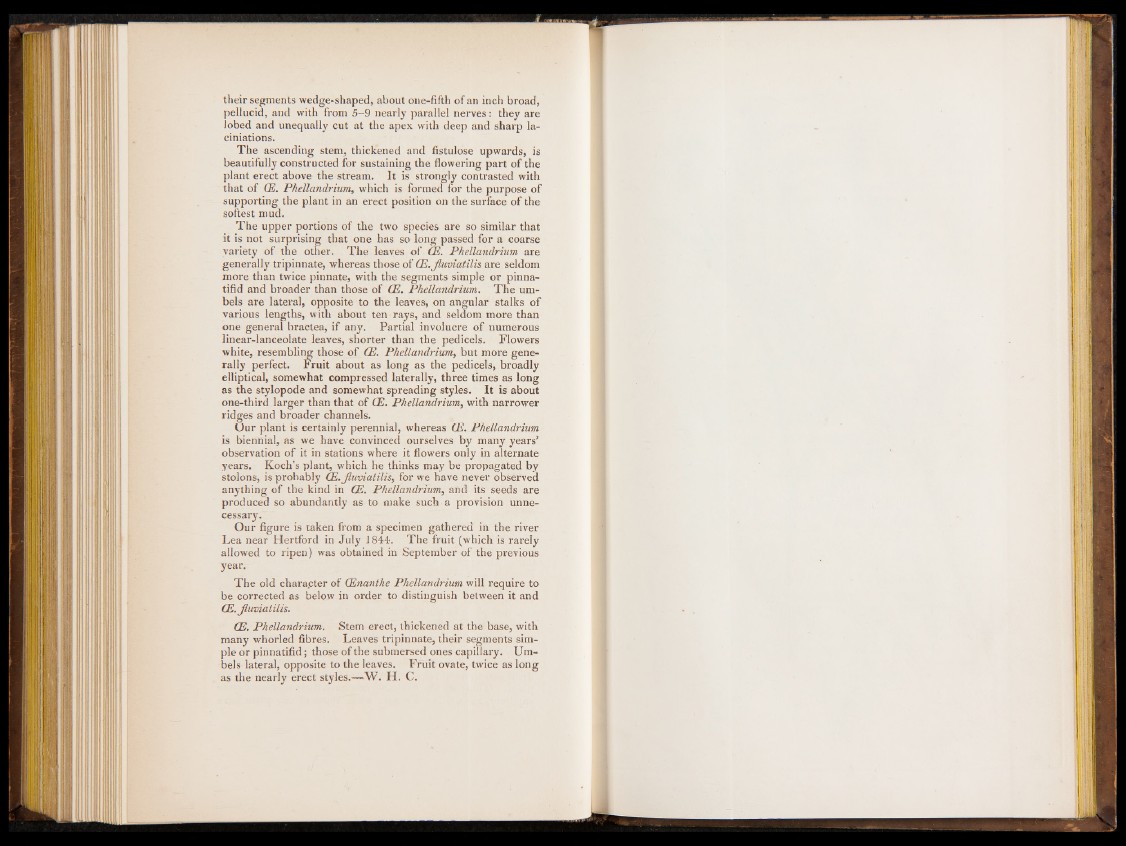
their segments wedge-shaped, about one-fifth of an inch broad,
pellucid, and with from 5-9 nearly parallel nerves: they are
lobed and unequally cut at the apex with deep and sharp la-
ciniations.
The ascending stem, thickened and fistulose upwards, is
beautifully constructed for sustaining the flowering part of the
plant erect above the stream. It is strongly contrasted with
that of CE. Phellandrium, which is formed for the purpose of
supporting the plant in an erect position on the surface of the
softest mud.
The upper portions of the two species are so similar that
it is not surprising that one has so long passed for a coarse
variety of the other. The leaves of (E. Phellandrium are
generally tripinnate, whereas those of CE.Jluviatilis are seldom
more than twice pinnate, with the segments simple or pinna-
tifid and broader than those of CE. Phellandrium. The umbels
are lateral, opposite to the leaves, on angular stalks of
various lengths, with about ten rays, and seldom more than
one general bractea, if any. Partial involucre of numerous
linear-lanceolate leaves, shorter than the pedicels. Flowers
white, resembling those of (E. Phellandrium, but more generally
perfect. Fruit about as long as the pedicels, broadly
elliptical, somewhat compressed laterally, three times as long
as the stylopode and somewhat spreading styles. It is about
one-third larger than that of CE. Phellandrium, with narrower
ridges and broader channels.
Our plant is certainly perennial, whereas CE. Phellandrium
is biennial, as we have convinced ourselves by many years’
observation of it in stations where it flowers only in alternate
years. Koch’s plant, which he thinks may be propagated by
stolons, is probably CE.Jluviatilis, for we have never observed
anything of the kind in CE. Phellandrium, and its seeds are
produced so abundantly as to make such a provision unnecesOsaurry
.figure is taken from a specimen gathered in the river
Lea near Hertford in July 1844*. The fruit (which is rarely
allowed to ripen) was obtained in September of the previous
year.
The old charapter of CEnanthe Phellandrium will require to
be corrected as below in order to distinguish between it and
CE.Jluviatilis.
CE. Phellandrium. Stem erect, thickened at the base, with
many whorled fibres. Leaves tripinnate, their segments simple
or pinnatifid; those of the submersed ones capillary. Umbels
lateral, opposite to the leaves. Fruit ovate, twice as long
as the nearly erect styles.—W. H. C.